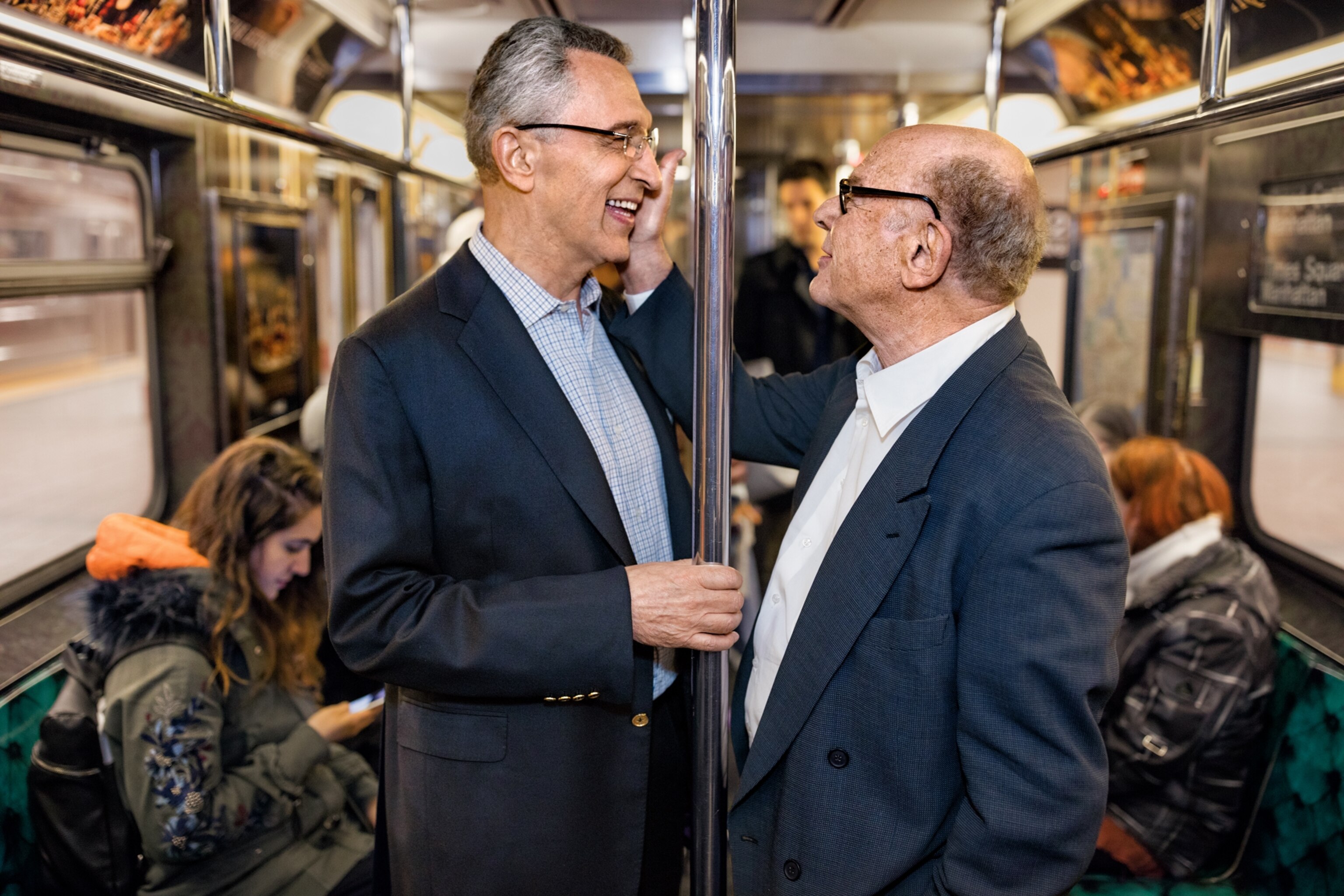
The Man Who Put a Bounty on Blindness
When Sanford Greenberg went blind he swore he’d find its cure.
Fifty-five years ago Sanford Greenberg was 20, newly blind through bad luck and misdiagnosis, and rightly angry at the world when he made a vow from his hospital bed. “No one should have to go blind,” he thought. “It was a promise I made not just to myself but to God.”
It was, and remains, an enormous aspirational pledge. Around the world 39 million people—roughly one out of 200—are blind, as writer David Dobbs and photographer Brent Stirton reveal in this month’s cover story. Another 246 million are moderately or severely visually impaired. The human costs are staggering, both for those with vision loss and for the hundreds of millions of people who assist them.
Greenberg is one of the fortunate ones. In 1961 he ignored the social worker who suggested he go home to Buffalo, New York, and make cane-backed chairs in a program for the blind. Instead, with the aid of the college roommate who read textbooks to him and helped him get around campus, Greenberg finished his bachelor’s degree at Columbia. He earned a doctorate at Harvard. He worked at the White House. He helped create a device that made listening to recorded speech more convenient for blind people—and made him financially independent in the process. He serves on boards and commissions too numerous to name. He married Sue, whom he’d loved since sixth grade; they are married still. And he remains close friends with that Columbia roommate, who studied architecture but pursued a career in music: Art Garfunkel, of Simon & Garfunkel fame.
This brings us to the Sanford and Susan Greenberg Prize to End Blindness by 20/20—a reward of three million dollars in gold to the person or persons who contribute most to ending blindness by 2020.
“Clinical relief of blindness … appears to stand at a point rather similar to that of the nascent American program of space exploration in the 1950s and early 1960s,” Greenberg says. “Practically waiting.”
Worldwide, half of all blind people lose their sight to cataracts—routinely fixed in the developed world but a tragically common cause of blindness in the developing one. Meanwhile other approaches are advancing rapidly, as our coverage explains: gene and stem cell therapies, bionic implants.
How does Greenberg regard all this? “My determination has not faltered,” he says. “Blindness is an injustice—‘unfair,’ we say in our plainspoken American way. We must act to end it.”
Related Topics
You May Also Like
Go Further
Animals
- What rising temperatures in the Gulf of Maine mean for wildlifeWhat rising temperatures in the Gulf of Maine mean for wildlife
- He’s called ‘omacha,’ a dolphin that transforms into a man. Why?He’s called ‘omacha,’ a dolphin that transforms into a man. Why?
- Behind the scenes at America’s biggest birding festivalBehind the scenes at America’s biggest birding festival
- How scientists are piecing together a sperm whale ‘alphabet’How scientists are piecing together a sperm whale ‘alphabet’
Environment
- What rising temperatures in the Gulf of Maine mean for wildlifeWhat rising temperatures in the Gulf of Maine mean for wildlife
- He’s called ‘omacha,’ a dolphin that transforms into a man. Why?He’s called ‘omacha,’ a dolphin that transforms into a man. Why?
- The northernmost flower living at the top of the worldThe northernmost flower living at the top of the world
- This beautiful floating flower is wreaking havoc on NigeriaThis beautiful floating flower is wreaking havoc on Nigeria
- What the Aral Sea might teach us about life after disasterWhat the Aral Sea might teach us about life after disaster
History & Culture
- This thriving society vanished into thin air. What happened?This thriving society vanished into thin air. What happened?
- These were the real rules of courtship in the ‘Bridgerton’ eraThese were the real rules of courtship in the ‘Bridgerton’ era
Science
- Extreme heat can be deadly – here’s how to know if you’re at riskExtreme heat can be deadly – here’s how to know if you’re at risk
- Why dopamine drives you to do hard things—even without a rewardWhy dopamine drives you to do hard things—even without a reward
- What will astronauts use to drive across the Moon?What will astronauts use to drive across the Moon?
- Oral contraceptives may help lower the risk of sports injuriesOral contraceptives may help lower the risk of sports injuries
- How stressed are you? Answer these 10 questions to find out.
- Science
How stressed are you? Answer these 10 questions to find out. - Does meditation actually work? Here’s what the science says.Does meditation actually work? Here’s what the science says.
Travel
- Going on a cruise? Here’s how to stay healthy onboardGoing on a cruise? Here’s how to stay healthy onboard
- What to see and do in Werfen, Austria's iconic destinationWhat to see and do in Werfen, Austria's iconic destination
- How to get front-row seats to an active volcano in GuatemalaHow to get front-row seats to an active volcano in Guatemala
- Urban wine is making a comeback in Paris. Here's how to try itUrban wine is making a comeback in Paris. Here's how to try it



